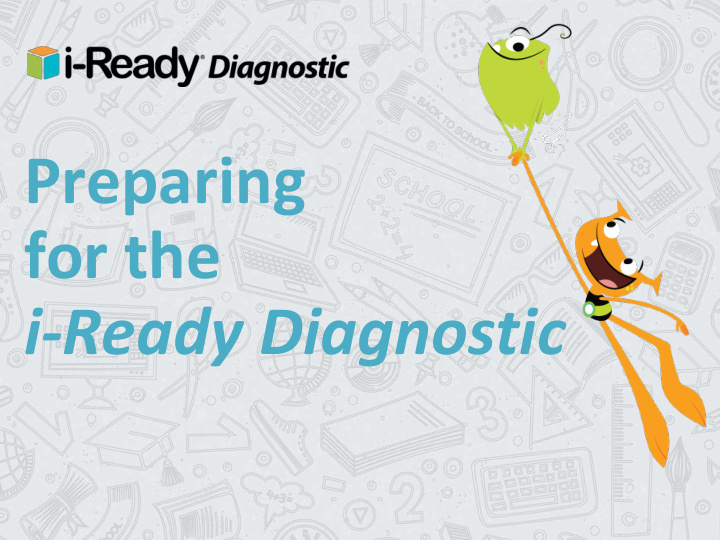



Preparing for the i-Ready Diagnostic
Some helpful reminders: • i-Ready is a test that adapts to you. • You will see questions that seem very simple and others that are more difficult until it finds questions that are “just right” for you. • You may get questions you have not learned yet. • If you rush , you may have to restart the test.
How to Access iReady There are TWO ways to access i-Ready 1. Go to your My Compass Course, and a. Go to Unit 1 ---> Lesson 1 ---> Select i-Ready link 2. Login directly from i-Ready a. Go to https://login.i-ready.com/ I Your username is: your Compass email address (firstname.lastname@scholars.compasscharters.org) Your password is: compass1
Once you log in, you will see this page:
Next, you will see a page like this:
In Math, you may see questions that look like this: Move your mouse to this speaker icon if you would like to hear the question again. Clicking on the Done button submits your Select an answer answer. You cannot by clicking on it. change your answer after you click on this button. Click on the tool button if the question asks you to.
In Reading, you may see questions that look like this: Use these arrows to go forward and backward within reading passages.
Some helpful tips:
Why Try My Best? ● Show what you know ● Show your level of mastery ● See your growth Determine Additional Supports: ● Intervention ● Differentiation by teachers ● Teacher Q&A sessions ● Show any skill gaps ● Determine if you need more of a challenge
Set up for Success • Create a quiet, clean workspace • Have paper and pencils easily accessible • Eat a healthy breakfast before beginning • Get moving, to increase oxygen flow to your brain • Take 3 deep breaths in through your nose, and out of your mouth to calm any jitters • Take purposeful breaks during diagnostic • Give yourself a pat on the back, when done!
What Happens After? Your teacher will share the results in a Student Profile Report.
Questions? Please let your Teacher / Educational Facilitator know if you have any questions!
Recommend
More recommend